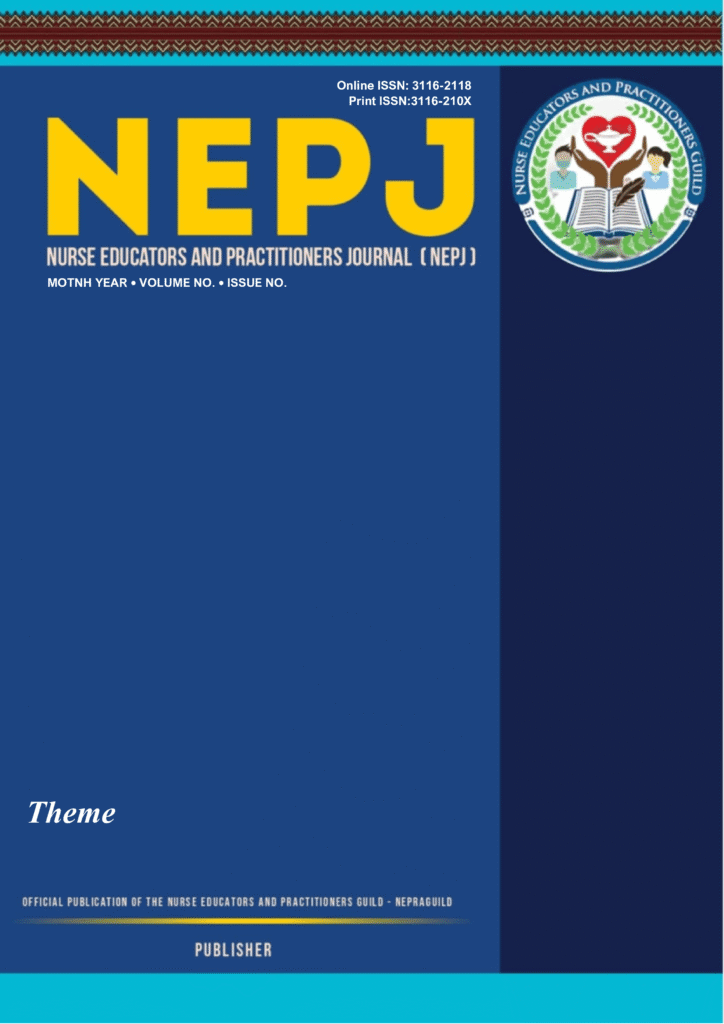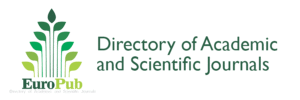NEPJ 2025;01(1):3-15 | Published on: 12 September 2025
Maureen L. Desquitado, MSN, RN
Introduction: This study investigates incidence rates of bullying and violence within adult health units and their effects on nurses’ mental health and job productivity. Methods: Descriptive-correlational design; 121 nurses in Cabuyao, Laguna, Philippines; convenience sampling; data collected via adapted WHO/ILO/ICN/PSI questionnaire, DASS-21, and NWFQ; analysis with descriptive stats, Chi-square, Spearman Rho, and regression using Jamovi; data collection over six weeks (March–April 2025). Results: “Very Low” overall workplace aggression (mean=1.46, severity=1.42) negatively impacted mental health (p=0.017); patients were primary aggressors (mean=1.99); low mental distress but some nurses considered quitting; workplace bullying significantly reduced job productivity (β=-0.279, p=0.032), stress linked to lower productivity (p=0.009). Conclusion: Even minimal workplace aggression affected nurses’ mental health and job productivity. Patients were main perpetrators. Stress and workplace issues influence thoughts of quitting despite normal mental distress levels.
NEPJ 2025;01(1):16-25 | Published on: 12 September 2025
Paul Jason D. Laurico, MAN, RN, PTRP
Introduction: Maternal mortality remains a significant concern in the Philippines, with a high maternal mortality ratio, emphasizing the need for effective interventions. This study investigated the level of awareness and extent of practice of structured exercises among pregnant women in Baguio City, Philippines. Methods: A descriptive correlational design was employed to investigate the level of awareness and extent of practice of structured exercises among 105 pregnant women in Baguio City. A convenience sampling was utilized to identify factors influencing exercise adoption and inform the development of culturally appropriate interventions aimed at improving maternal health outcomes. A validated questionnaire was used through “yes/no” responses and categorical scale with three response options, in determining the awareness and practice of various exercises. Data was analyzed using descriptive statistics, and simple linear correlation. Results: Findings revealed an overall moderate level of awareness (Mean Percentage Score = 49.31%) and practice (Mean Percentage Score = 1.99%) of structured exercise. Significant positive correlations were found between awareness and practice for several exercises, particularly those involving ankle and toe exercises, reflecting a direct translation of awareness into action. Educational attainment and the history of previous pregnancies positively influenced both awareness and practice, suggesting that prior experience and higher educational levels are associated with greater understanding of exercise benefits and increased self-efficacy. Conversely, engagement in exercises, such as abdominal and pelvic exercises, remained low, indicating an important area for intervention. This discrepancy accentuates the potential influence of perceived barriers, such as fear of complications and lack of access to resources, which outweigh perceived benefits. Conclusion: Further research is needed to assess the applicability of these findings across various populations and settings, as well as to evaluate the effectiveness of culturally tailored interventions aimed at overcoming the identified barriers. Ultimately, this research aims to contribute to broader strategies for reducing maternal mortality in the Philippines by promoting safe and effective exercise during pregnancy.
NEPJ 2025;01(1):26-41 | Published on: 12 September 2025
Shahinaz A. Lu, MAN, RN
Introduction: Community Health Nurses (CHNs) are crucial to primary healthcare but face resource shortages, heavy workloads, and health risks that may lead to burnout and attrition. Limited research explores factors affecting their resilience, particularly during health crises in Zamboanga City. Aim: This study aimed to explore the lived experiences of resilience among CHNs working in Zamboanga City. Methods: This qualitative study used a phenomenological approach to explore the lived experiences of resilience among ten CHNs in Zamboanga City, this approach provides an in-depth description on the challenges and resiliency of CHNs. Respondents were purposively selected from three health centers with at least one year of experience. Data were gathered via semi-structured interviews and analyzed using thematic analysis, guided by Van Breda’s Resiliency Model and Callista Roy’s Adaptation Model. Results: The study revealed that CHNs face multiple challenges—ranging from non-compliant patients and cultural barriers to resource shortages and emotional strain—especially during emergencies. In coping, they employed strategies aligned with Roy’s four adaptive modes, reflecting their capacity for self-care, professionalism, problem-solving, and reliance on social support. Conclusion: CHNs in Zamboanga city are resilient, effectively using coping strategies despite numerous workplace challenges. To enhance their resilience and to strengthen the healthcare programs, administrations, policies and healthcare services, adequate resources, continuing training, and institutional support must be provided among CHNs.
NEPJ 2025;01(1):42-53 | Published on: 12 September 2025
Abdulmalik Saqer Alruwaili; Sandro Villareal, EdD, RN
Introduction: Adequate training in infection prevention has been associated with improved knowledge and better practice adherence among nurses. This study aims to assess the factors associated with infection prevention and control (IPC) practices among primary healthcare nurses, providing a much-needed focus on this critical group within the healthcare system. Methods: This cross-sectional study assessed IPC practices among primary healthcare nurses in Aljouf City, Saudi Arabia, from March-April 2023, using a WHO-adapted questionnaire. Data were analyzed via descriptive statistics and multiple regression. This study was conducted with the approval of the University of Hail Institutional Review Board (H-2022-032).Results: Primary healthcare nurses demonstrated an “Advanced” overall level of IP practices (283/335), but the “Infection Control Programme” was at an “Intermediate” level (29.99).Tests of differences revealed no significant variations in IPC scores by age, gender, or nationality. However, significant differences were found by educational attainment (master's vs. baccalaureate, p=0.020), years of service (5-10 years vs. others, p=0.034), and IPC training (trained vs. untrained, p=0.028), with higher scores observed in nurses with master's degrees, 5-10 years of service, and IPC training. Multiple regression analysis confirmed these findings, indicating that educational attainment, years of service, and IPC training were significant predic Conclusion: This study highlights that primary healthcare nurses demonstrate advanced IPC practices, but the “Infection Control Programme” lags behind. Education, years of service, and training are key predictors of IPC proficiency, suggesting that interventions aimed at enhancing these areas will effectively improve IPC outcomes. These findings emphasize the need for continuous professional development and strategic program enhancements to ensure optimal infection prevention and control.
NEPJ 2025;01(1):54-72 | Published on: 12 September 2025
Glynn B. Batonan; Joval Andrei T. Arce; Marcus Rhancy M. Carreon; Richellaine Mae C. De Vera; Johannah Nicole G. Fernandez; Samantha Chloe R. Ibay; Aileen Joy S. Lucas; Crizza Mae B. Munoz; Alyssa Erill T. Perez; Kayle Portia D. Sevillano and Rachel C. Alfonso
Introduction: International student nurses who study abroad face various challenges. Existing studies regarding these are limited in scope. This study aims to explore the academic journey of international students, which is the totality of their experiences inside and outside their respective institutions. Objectives: To explore the academic journey of international students enrolled in the Bachelor of Science in Nursing Program in the Philippines and provide a holistic understanding of their journey. Methods: A descriptive phenomenological qualitative design was used, recruiting participants meeting the criteria: (1) students raised in a foreign country, (2) current citizens of a foreign country or with dual citizenship, (3) in the Philippines solely for education, (4) enrolled in a BSN program in the Philippines, and (5) with at least six months of residency in the Philippines. Eight informants were included, data were collected through semi-structured interviews, and analyzed using Colaizzi’s Phenomenological Data Analysis method. Rigor measures were utilized throughout the study process. Results: The study revealed four themes from the responses of the informants: (1) Flight of Discovery encapsulates their overall experiences in the Philippines. (2) Flight to Excellence delves into their diverse experiences in educational and clinical settings. (3) Flight into Socio-cultural Diversity focuses on their immersion into the Filipino community. Lastly, (4) Flight of Adaptation covers their self-help strategies as they traverse into a new environment. Conclusion: International student nurses in the Philippines encounter various experiences and challenges in their academic journey. Their experiences have led them to discover a variety of factors inside and outside their respective institutions that either enable or hinder them from adjusting to the new environment. These experiences require flexibility and adaptability to the educational processes and socio-cultural diversities.
NEPJ 2025;01(1):73-87 | Published on: 12 September 2025
Nicolette Kelly T. Balatbat; Eleonor Mae D. Cariño; Jovelle Kyryl W. Enriquez; Dashley Shantalle A. Escandor; Kurt Jeizrel G. Kiling; Jialiang Li; Wendy Denise T. Lubguban; Chrisann Cindy E. Rizo Jose; Caryl Joyce A. Santos; Jan Ivory R. Taguiling; and Jose Reinhard Laoingco
Introduction: Compassion is an essential quality in Nursing, enhancing patient care, emotional well-being, and nurse-patient relationships. With increasing academic and clinical demands, it is important to understand what influences compassion among student nurses. Family functioning, which includes emotional support, communication, and adaptability, may play a role, although limited studies have examined its direct impact. Objectives: This study examined the relationship between family functioning and compassion levels among Bachelor of Science in Nursing (BSN) students. It sought to determine the family functioning and compassion levels, assess their differences across sex, year level, and type of educational institution, and evaluate their correlation. Methods: A quantitative descriptive-correlational cross-sectional design was utilized. Using stratified random sampling, 584 student nurses from two universities in Benguet were selected. Data were gathered from February to March 2025 using two standardized tools: the Family APGAR and the Compassion Scale. Statistical analyses included descriptive statistics, T-tests, one-way ANOVA, Tukey’s HSD, and Pearson’s Correlation. Results: Most students reported a high level of family functioning (Mean APGAR = 7.44). Significant differences were observed across year levels and educational institutions, but not by sex. Compassion levels were similarly high, with females demonstrating significantly higher scores. A weak yet significant positive correlation between family functioning and compassion levels was established, suggesting that stronger family support may enhance compassionate behaviors. Conclusion: This study emphasizes the influence of family functioning on the development of compassion in student nurses, highlighting the importance of supportive family environments in fostering emotional and professional growth. Future studies should consider longitudinal and mixed-method designs, broaden participant diversity, and examine additional factors such as mental health, socioeconomic status, caregiving experiences, and academic stress.
NEPJ 2025;01(1):88-101 | Published on: 12 September 2025
Mark Angelo O. Mane, MSN, RN
Introduction: This study assessed the medication adherence and awareness of Local Government Unit (LGU) support programs among employees diagnosed with hypertension in a selected company. It examined the relationship between awareness and adherence and identified key factors influencing these behaviors to inform workplace and public health strategies. Methods: A descriptive-correlational design was used involving 103 purposively selected employees. Validated tools were utilized, including the Morisky Medication Adherence Scale (MMAS-5), a researcher-made LGU Awareness Scale, the Beliefs about Medicines Questionnaire (BMQ), and the Multidimensional Scale of Perceived Social Support (MSPSS). Data were gathered between April and May 2025 and analyzed using descriptive statistics, chi-square tests, Spearman’s Rho, and multiple regression. Results: The medication adherence was moderately high (M = 3.01), especially in following scheduled doses, but declined when symptoms improved or side effects occurred. Awareness of government health programs was also moderately high (M = 2.68), yet formal communication and actual usage were low. Behavioral factors (β = 0.328, p = 0.002), workplace conditions (β = 0.305, p = 0.004), and financial accessibility (β = 0.320, p = 0.007) significantly influenced adherence. Demographic factors such as age, sex, tenure, and education were not significantly associated. Awareness was moderately correlated with adherence (ρ = 0.561, p < 0.001), but behavioral factors and support systems did not significantly moderate this relationship. Conclusion: While most employees with hypertension follow their medication regimen, barriers such as behavioral hesitations, workplace stress, and financial limitations reduce full adherence. This supports theoretical perspectives such as the Health Belief Model, emphasizing perceived barriers and cues to action. Findings underscore the importance of improving LGU program communication, strengthening workplace support, and addressing behavior-related barriers to enhance long-term hypertension management among working adults. From a policy perspective, workplace-based health promotion programs integrated with LGU services, such as orientation days and digital kiosks for medicine access, can support adherence.
NEPJ 2025;01(1):102-119 | Published on: 12 September 2025
Norenia T. Dao-ayen, PhD, RN; Emily P. Abad, MSN, RN; Elizabeth H. Bautista, PhD, RN
Background: Nurses face increasing demands for high-quality care, driven by local and global health advancements. This necessitates research and the adoption of evidence-based practices to enhance both nursing care and the profession itself. The literature reports the lack of understanding and accessibility of research related to the research capability of nurses. Collaborative nursing research across academic and practice settings is imperative to generate knowledge to improve patient care; however, models of academic/practice partnerships for nursing research are lacking. Aim: This study determined the research competency of professional nurses to serve as a basis for the development of research-based activities. Methods: Utilizing a quantitative descriptive survey design, with the use of a questionnaire and structured small group interview (4 small groups with 3-4 members per small group), data were gathered from 81 nurses employed at hospital X, which is a 250–bed capacity tertiary hospital. The self-made structured questionnaire is valid with a CVI=0.956. Frequency, percentage, mean, and the Kruskal-Wallis test were used to treat the data statistically. Findings: Majority of the respondents belong to the younger population (87.66%) belonging to less than 2-5 years of service in the institution. Respondents are advanced nurse researchers (mean=1.95) and have been serving as respondents in research (50.00). The respondents had the highest mean =2.02 in problem identification and the lowest in research utilization with a mean=1.90. The research competency of nurses is significantly associated with educational attainment, with a p-value of 0.011. Position (p value=0.387), length of service (0.210), area of assignment (p value=0.449), and research involvement (p value=0.169) are not significantly associated with their research competency. Conclusion: Based on the findings of the study, the researchers conclude that nurses who are employed at Hospital X possess the knowledge; however, they lack the practical experience in research. The variable of educational attainment is an important factor in achieving research competency. There are personal, organizational, and professional facilitators and barriers to the research competency of the nurses. A research capability enhancement program for the nurses can be developed. The researchers recommend: enhancing the research competency of the nurses through a research capability-building program developed for them; strengthening the institutional support for ongoing research training, especially for the nurses who are pursuing their postgraduate education or continuing professional development in the research process; recognizing and rewarding research engagement and output among nursing staff to sustain high-level performance; the promotion of mentoring systems where expert and proficient nurses can guide those still developing their research competencies, and the conduct of future studies involving multiple institutions to broaden generalizability and include more inferential analysis.
NEPJ 2025;01(1):120-134 | Published on: 12 September 2025
Ayesha C. Penuela, MAN, RN, LPT
Introduction: Millennial deans (born 1981–1996) are increasingly visible in Philippine nursing education and are helping steer programs through accreditation, curriculum reforms, and workforce well-being concerns. Operating within culturally hierarchical institutions, these leaders describe anchoring decisions in values while adopting participatory and context-attuned approaches to change. Despite their growing presence, little is known about how these deans form and negotiate leadership identity as they assume the role, enact adaptive strategies in governance and day-to-day decision-making across diverse stakeholders, and cope with institutional and intergenerational pressures to sustain effective leadership. Aim:This study aimed to describe the essence of the lived experience of Filipino millennial nursing deans, focusing on leadership identity formation, adaptive leadership strategies in governance and decision-making, and coping mechanisms for institutional and generational challenges. Methods: Guided by Husserlian descriptive phenomenology, ten purposively selected millennial nursing deans from CHED-accredited Philippine institutions participated in in-depth semi-structured interviews. Data were analyzed using Colaizzi’s method, ensuring credibility through member checking, peer debriefing, and strict adherence to ethical standards. Results: Analysis revealed six major themes: (1) Thrust into Deanship Without Support, (2) Proving Legitimacy and Bridging Generational Differences, (3) Shared Governance, (4) Work-Life Balance, (5) Managing Vulnerabilities through Grit, and (6) Values-Driven and Adaptive Leadership. Intergenerational conflicts, emotional labor, sudden appointments, and a lack of mentorship were all mentioned by the participants. In spite of these obstacles, they showed tenacity and promoted inclusive, introspective, and wellness-focused leadership styles. These findings reveal that personal values and contextual adaptation are dynamically integrated into their leadership practices, reflecting key aspects of what can be called an adaptive-values approach. Conclusion: Filipino millennial nursing deans navigate institutional and generational challenges by combining adaptive strategies firmly anchored in individual and group values, advancing culturally responsive academic governance practices. This study's insights offer crucial direction for creating leadership frameworks, mentorship programs, and organized succession planning that are suited to the particular generational and contextual requirements of nursing education.
NEPJ 2025;01(1):135-151 | Published on: 12 September 2025
Joannes Paulus T. Hernandez, DComm, MAN, RN, CHSE
“Aerospace Nursing” is an emerging interdisciplinary field focused on addressing healthcare challenges in air and space travel, extreme remote environments, and analog missions. This analysis of 45 studies from 1975 to 2024 covers four research objectives: (1) identifying clinical and operational challenges, (2) evaluating required skills and training, (3) assessing nurses’ roles in crew well-being and safety, and (4) informing educational frameworks. A conceptual framework based on the nursing metaparadigm (“Person,” “Environment,” “Health,” and “Nursing”) with moderators (“Education,” “Training,” and “Research”) guide the analysis. Findings demonstrate physiological, psychological, and ethical issues, establish the need for trauma care and telehealth competencies, and recognize nurses’ critical contribution to mission safety. Gaps related to standardized curricula and the feasibility of adapting Earth-based nursing to space settings are identified. The analysis provides implications for practice, education, and policy, supporting the development of “Aerospace Nursing” programs.








